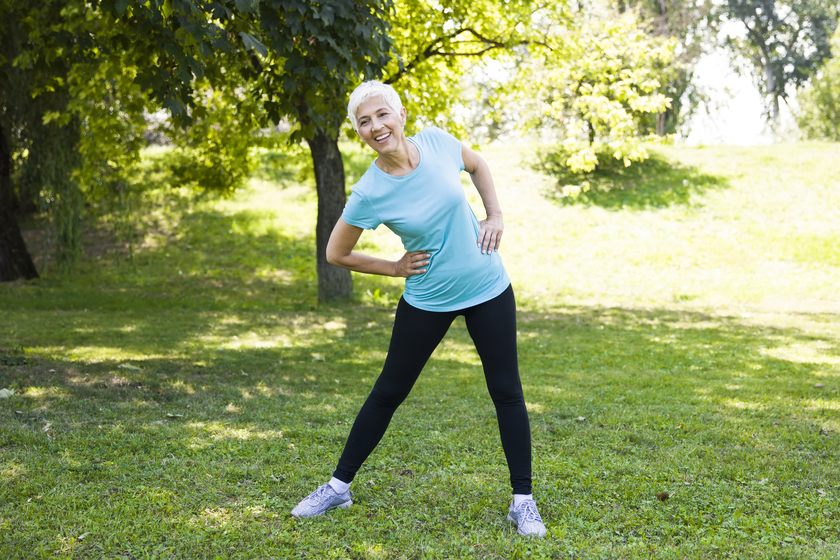As one navigates the golden years, staying active is more important than ever for overall health and mobility. Fortunately, retirement communities in South Carolina understand this need and offer a variety of activities to keep their residents active and healthy. One of the most beneficial forms of exercise for elderly individuals is stretching, which can improve flexibility, increase range of motion, and enhance overall wellness. Here, we delve into the various types of stretching exercises that the elderly can engage in, within the comfort of their community.
Dynamic Stretching: An Engaging Start
Dynamic stretching, a form of active movement that isn’t about holding a stretch but rather taking your body through ranges of motion that will better prepare you for your workout or daily activities, can be an excellent way for elderly individuals to start their exercise regimen. These types of exercises often mimic everyday actions, helping the elderly improve their functional fitness. For instance, leg swings are a type of dynamic stretch that mimics the act of walking, thereby enhancing mobility.
Residents can engage in dynamic stretching exercises during community-led exercise classes or in the privacy of their homes. The goal is to make smooth, controlled movements to improve flexibility and prepare the body for more strenuous activities.
Gentle Yoga: Balancing Mind and Body
Yoga is a popular exercise among the elderly, thanks to its emphasis on gentle movement and flexibility. Many retirement communities in South Carolina offer yoga classes tailored to their residents’ abilities. In these classes, residents can engage in gentle yoga stretches that help to enhance flexibility, balance, and strength.
Furthermore, yoga’s focus on mindfulness and breath control can also have significant mental health benefits, including stress reduction and improved concentration. As such, yoga serves as a comprehensive exercise that promotes both physical and mental wellbeing.
Tai Chi: A Path to Improved Flexibility
Another excellent form of exercise for elderly individuals is Tai Chi, a Chinese martial art often referred to as “meditation in motion.” This low-impact, slow-motion exercise allows residents to move without putting excess pressure on their muscles and joints.
In Tai Chi classes, the elderly engage in a series of movements and stretches that promote flexibility, balance, and muscle strength. Given its gentle nature, Tai Chi is suitable for individuals of all fitness levels, making it a popular exercise choice in retirement communities.
Self-Massage Stretches: Aiding Muscle Relaxation
Lastly, self-massage stretches can help the elderly improve their flexibility while also providing the benefits of a therapeutic massage. These exercises typically involve using a foam roller or a similar device to gently massage and stretch various muscle groups.
Many communities have trained fitness professionals who can guide residents in performing these stretches safely and effectively. By integrating self-massage stretches into their routine, elderly individuals can enjoy increased muscle relaxation and improved circulation.
Pilates: A Blend of Strength and Flexibility
Pilates is another type of exercise that can be beneficial for residents in retirement communities. It’s a system of exercises designed to improve physical strength, flexibility, and posture, while also enhancing mental awareness. Many South Carolina retirement communities offer Pilates classes specially designed for the elderly, helping them build strength, enhance flexibility, and improve balance. These classes typically incorporate a range of exercises that can be modified to suit different fitness levels, ensuring that everyone can participate and benefit.
Therapeutic Stretching: Aiding Recovery and Maintenance
Therapeutic stretching exercises, often recommended by physical therapists, can help elderly individuals recover from injuries or manage chronic conditions like arthritis. These stretches are designed to enhance mobility, reduce pain, and improve overall functionality. In South Carolina’s retirement communities, residents often have access to professionals who can guide them through these therapeutic stretches, ensuring they are performed safely and effectively. This hands-on approach provides residents with personalized care, addressing their unique health needs.
Incorporating Stretching into Daily Life
Lastly, residents can incorporate simple stretching exercises into their daily routine. For instance, neck rolls upon waking up, gentle leg stretches before a walk, or shoulder stretches during television breaks. These little pockets of stretching throughout the day can significantly contribute to improved flexibility and mobility. It’s a practical way to maintain an active lifestyle without needing to dedicate significant chunks of time to exercise. Such integration of fitness into daily living is encouraged and facilitated by the supportive environment provided by retirement communities in South Carolina.
Staying active and maintaining flexibility is essential for a healthy and fulfilling retirement. Retirement communities in South Carolina offer a range of activities, including various forms of stretching exercises, to support their residents’ physical wellbeing. Whether through dynamic stretching, gentle yoga, Tai Chi, or self-massage stretches, the elderly have numerous opportunities to stay fit, active, and flexible while enjoying their golden years in these vibrant communities.







